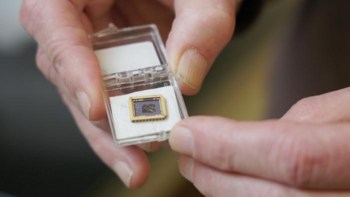Researchers in the US have developed a new 18-carat gold alloy that could replace existing alloys in a variety of jewellery, dental, medical and electronic applications. The new alloy developed by Jan Schroers and colleagues at the California Institute of Technology and Liquidmetal Technologies, also in California, contains gold, copper and silicon, with smaller amounts of silver and palladium (Appl. Phys. Lett. 87 061912).

Gold and gold alloys are widely used in technical applications because they offer high thermal conductivity, high electrical conductivity and are resistant to corrosion. For jewellery the important qualities are colour, the ability to be moulded and the fact that gold does not tarnish. However, pure gold and high-carat alloys are crystalline, which makes them soft and easily scratched or dented.
In recent years researchers have tried to make amorphous gold alloys that do not suffer from this problem. An ideal gold alloy needs to have a glass transition temperature of at least 370 Kelvin and to be stable at room temperature. It also needs to have a high gold content, a high hardness and a “casting thickness” that is large enough to make jewellery. Moreover, the alloy should have a large supercooled liquid region — the region of temperature in which the amorphous phase first relaxes into a highly viscous liquid before eventually crystallizing — because this allows the material to be handled like a plastic.
Schroers and colleagues have now shown that alloys containing gold, copper and silicon, with smaller amounts of silver and palladium, have much better properties than existing alloys. Although the new alloys are only 50% gold by number of atoms, they are 75% gold — which is equivalent to 18-carat — by weight because gold atoms are much heavier than copper and silicon atoms.
The best alloy, which has the chemical formula Au49Ag5.5Pd2.3Cu26.9Si16.3, has a glass transition temperature of 401 Kelvin, a supercooled liquid region of 58 Kelvin, and a casting thickness that exceeds 5 millimetres. Furthermore, it has a Vickers hardness that is twice that of conventional 18-carat gold alloys.
“If headed into the supercooled liquid region our alloy can be formed into complicated shapes at around 150°C compared to the processing temperature of conventional gold alloys of about 1000°C,” says Schroers. “The alloy is very interesting for the jewellery industry and we anticipate it being used shortly because of its processing advantage and high hardness at room temperature. It will improve current jewellery and might even allow for new designs.” The team now plans to vary the colour of the alloy while keeping the other properties constant.



